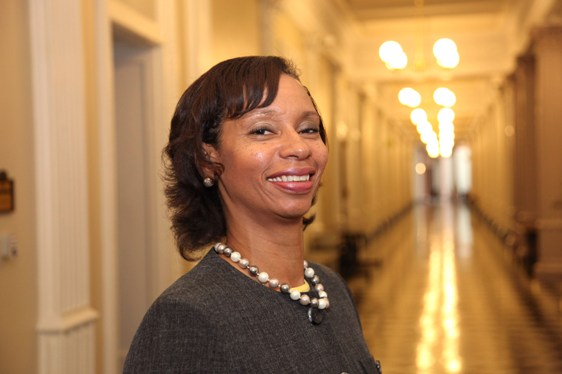
Ed. Note: Champions of Change is a weekly initiative to highlight Americans who are making an impact in their communities and helping our country rise to meet the many challenges of the 21st century.

As Vice President of Academics, I had the honor of filling in for our President, Dr. Odell M. Owens, at the White House roundtable discussion Sept. 21 on the role of community colleges in workforce development and economic recovery. Cincinnati State has a clear emphasis on quality academics and creating pathways to employment for our community. We use strategic partnerships to create synergies that have broad based impact. Some examples follow:
- Cincinnati State and the Warren County Career Center are partnering to help students interested in careers in the electric power industry. The two institutions will offer “One Plus One” programs that marry the WCCC’s career training programs in advanced electrical occupations with those at Cincinnati State leading to an Associate of Technical Studies degree in electrical power technology.
This opens not only a pathway to traditional jobs, such as a lineman or technician, but also to opportunities in the growing renewable energy industry and in evolving areas within the utility industry. (Cincinnati State, for example, offers a degree in “Smart Grid” technologies.) The Ohio River Valley is in the heart of the nation’s power generation corridor. For those who successfully complete the program, we estimate the job placement rate will be above 90 percent.
- Cincinnati State joined 16 other community colleges across the Midwest in launching an innovative series of courses involving health information technology. It’s part of the effort to implement an electronic health records system in the United States that was incorporated into the health reform bill passed by Congress last year and signed into law by President Obama. We will recruit and train hundreds of HIT professionals annually over the next three years. The coursework is online, and we are working on an associate degree for individuals to continue their studies.
- On Saturday, Sept. 24, I had the pleasure of attending the ribbon-cutting ceremony for the Greentree Health Science Academy. The Academy is an innovative public/private collaboration including Atrium Medical Center, Miami University, Warren County Career Center, and Cincinnati State. The City of Middletown and State of Ohio were involved in securing financing for the project. The new state-of-the-art educational facility on a medical center campus will allow us to connect programs that range from high school studies to industry credentialing, from Associate to Bachelor Degree levels.
The Greentree Academy will help students achieve their career goals cost-effectively and conveniently, and in manageable steps that fit their busy lives. Cincinnati State’s initial opening of a Paramedic Certificate program there is just the first phase of other degree programming planned for the Academy. Discussions are currently underway for a nursing pathway.
- In my remarks during the White House roundtable, I mentioned Cincinnati State’s STEM partnership with Cincinnati Public Schools and other high schools in our region. This program is bringing talented inner-city and suburban students into our labs and classrooms for shared experiences and interactions with some of our best faculty members. They leave not only with college credit, but often a sense of excitement about math, science and other essential subjects.
- In my remarks I also noted a recent initiative the led Cincinnati State and the Great Oaks Career Campuses to consolidate their practical nursing programs. The result: students now have improved access to a seamless program that allows us to offer courses at suburban locations throughout Greater Cincinnati that are taught by our instructors and which are fully integrated into our overall curriculum.
As you see, Cincinnati State is on the move. We are a dedicated example of an institution making an impact within our community while helping our country rise to meet the many challenges of the 21st century. We appreciate the opportunity to share our story.
Dr. Monica Posey is the Vice President for Academics at Cincinnati State Technical and Community College.

